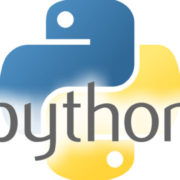There’s no one best programming language
 Asking “which is the best programming language” is like asking about the most important cooking tool in your kitchen. Mixer? Spatula? Microwave? Cooktop? Measuring cup? Egg timer? Lemon zester? All are critical, depending on what you’re making, and how you like to cook.
Asking “which is the best programming language” is like asking about the most important cooking tool in your kitchen. Mixer? Spatula? Microwave? Cooktop? Measuring cup? Egg timer? Lemon zester? All are critical, depending on what you’re making, and how you like to cook.
The same is true with programming languages. Some are best at coding =applications that run natively on mobile devices — think Objective-C or Java. Others are good at encoding logic within a PDF file, or on a web page — think JavaScript. And still others are best at coding fast applications for virtual machines or running directly on the operating system — for many people, that’s C or C++. Want a general purpose language? Think Python, PHP. Specialized? R and Matlab are good for statistics and data analytics. And so-on.
Last summer, IEEE Spectrum offered its take, surveying its audience and writing up the “2017 Top Programming Languages.” The top 10 languages for the typical reader:
- Python
- C
- Java
- C++
- C#
- R
- JavaScript
- PHP
- Go
- Swift
The story’s author, Stephen Case, noted not much change in the most popular languages. “Python has continued its upward trajectory from last year and jumped two places to the No. 1 slot, though the top four—Python, C, Java, and C++—all remain very close in popularity. “
What Do The PYPL Say?
The IEEE Spectrum annual survey isn’t the only game in town. The PYPL (PopularitY of Programming Language) index uses raw data from Google Trends to see how often people search for language tutorials. The people behind PYPL say, “If you believe in collective wisdom, the PYPL Popularity of Programming Language index can help you decide which language to study, or which one to use in a new software project.”
Here’s their Top 10:
- Java
- Python
- JavaScript
- PHP
- C#
- C
- R
- Objective-C
- Swift
- MATLAB
Asking the RedMonk
Stephen O’Grady describes RedMonk’s Programming Language Rankings, as of January 2018, as being based on two key external sources:
We extract language rankings from GitHub and Stack Overflow, and combine them for a ranking that attempts to reflect both code (GitHub) and discussion (Stack Overflow) traction. The idea is not to offer a statistically valid representation of current usage, but rather to correlate language discussion and usage in an effort to extract insights into potential future adoption trends.
The top languages found by RedMonk look similar to PYPL and IEEE Spectrum:
- JavaScript
- Java
- Python
- PHP
- C#
- C++
- CSS
- Ruby
- C
- Swift & Objective-C (tied)
Use the Best Tool for the Job
It would be tempting to use data like this to say, “From now on, everything we’re doing will be in Java,” or “We’re going to do all web coding in JavaScript and use C++ for applications.” Don’t do that. That would be like say, “We’re going to make everything in the microwave.” Sometimes you want the microwave, sure, but sometimes you want the crockpot, or the regular oven, or sous vide, or the propane grill in your back yard.
The goal is productivity. Use agile processes like Scrum to determine what your development teams are going to build, where those applications will run, and which features must be included. Then, let the developers choose languages that fit best – and that includes supporting experimentation. Let them use R. Let them do some coding in Python, if it improves productivity, and gets a better job done faster.



